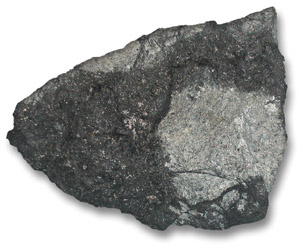 |
|
|||||||||
|
When the sky falls, get a sample When explosions rocked Chicago’s south suburbs after midnight one late-March morning, geophysical-sciences professor Lawrence Grossman heard the crashes and woke up. A few hours later Grossman, who happens to specialize in meteorites, learned that a meteor had exploded nearby and that his own research subjects were strewn about Park Forest—the home of Steven Simon, a senior research associate in the geophysical-sciences department, who saw the bright light but didn’t hear the explosion.
The geophysicists borrowed a 12-oz. piece from a local resident for testing. Because their team was able to measure the rock’s radioactivity so soon after its landing, Simon says, they were able to “get short-lived isotopes.” Using a scanning electron microscope, they learned that the meteorite was a common variety whose “parent body” was at least 500–1,000 kg. Its “light-dark structure,” Simon says, may have resulted from minerals melting and oozing between cracks upon its impact with an asteroid. The researchers didn’t yet have a good estimate on how long it traveled in space before crashing. —A.B.
|
|
Contact
|


